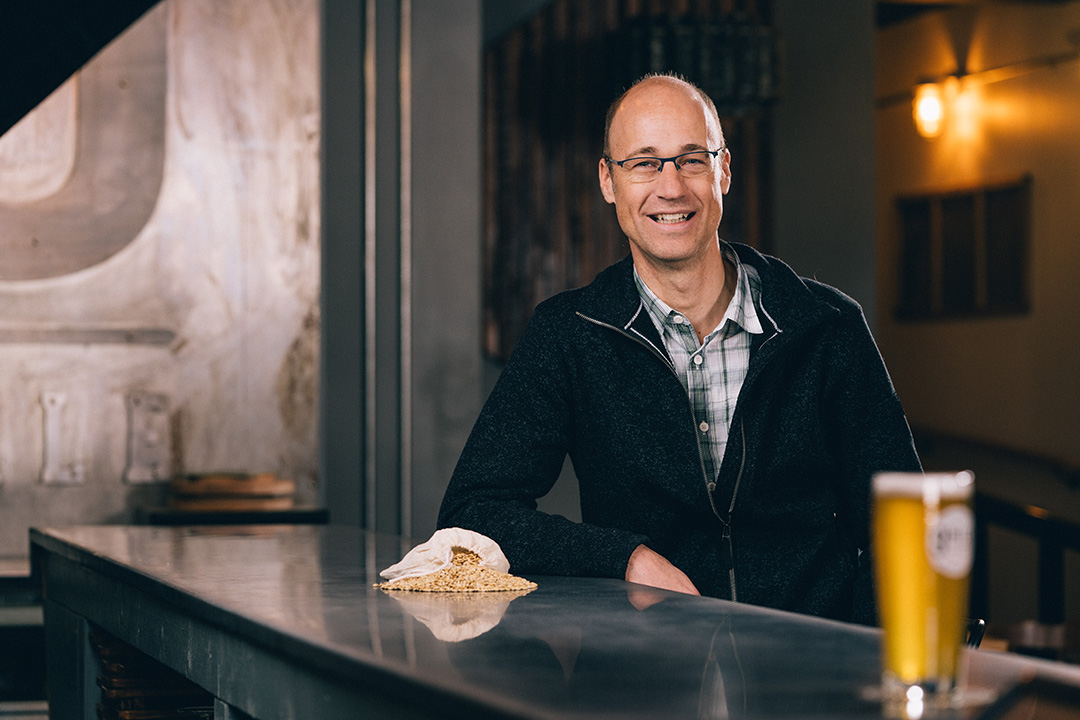
Barley breeding makes for crafty collaboration
When it comes to brewing better beer, most lager lovers might not think to raise a glass in salute to the University of Saskatchewan (USask).
By Chris MorinThen again, for a number of craft brewers across Saskatchewan to industry giants such as Molson and Sapporo, it’s no secret that there is some refreshing research being done at the university when it comes to quality ingredients and expertise.
It’s a reputation that has certainly been well-earned: USask has been contributing to better brewing for the better part of a century, and it’s also one that Dr. Aaron Beattie (PhD), an associate professor in the College of Agriculture and Bioresources, is all too happy to carry on.
“The barley world is quite a tight-knit group. We work quite closely with other barley breeding programs in Western Canada. We exchange data, and that happens over the entire course of producing a new variety of barley,” said Beattie, who adds that USask’s Crop Development Centre (CDC) works with everyone from farmers to craft brewers to ensure a satisfying final product.
And when it comes to the research, Beattie said the work being done at USask is seminal to giving a number of beer varieties their distinct traits. According to Beattie, there are particular genes that produce certain off-flavours and affect key characteristics of the body of the brew.
“In Japan, the head on a beer is something to be enjoyed and is considered a positive attribute in beer,” said Beattie, whose own interest in crop breeding started with bean breeding during his time at the University of Guelph. “Thanks to the research being done here, we are able to help produce a beer that has a longer shelf life, with a head that lasts longer.”
While the first barley varieties that came out of USask happened in the early 1920s, the university’s worldwide brew revolution didn’t land until 1981, when barley breeder Dr. Bryan Harvey (PhD) and his team released Harrington, a now-famous malting barley variety known for its colour and flavour as well as providing an excellent beer shelf life.
Considered one of the greatest sud successes to come out of the university labs, Beattie said that the Harrington variety changed the face of malting and brewing around the world.
“It was a real step forward but it also put the University of Saskatchewan on the map worldwide,” said Beattie. “Since then, CDC barley breeders, including my predecessor Brian Rossnagel, have continued to put out varieties that have had a large impact in Western Canada.”
While the CDC has released several varieties of barley since then, one of the latest releases to make a splash is CDC Bow, the star ingredient used in the Bow Project. That initiative paired the barley with craft breweries around Saskatchewan, with each coming up with their own uniquely-flavoured beer but using the same ingredient.
Beattie said events like the Bow Project are good exposure for the work being done at the AgBio college, especially when it comes to shining a light on campus research that some people may not be aware of. And while events like this bring together an already tight-knit community, it’s not just about crafting good science and great beer—it’s also a labour of love.
“We don’t generally get to see the end product or people enjoying it on an intimate level,” said Beattie. “As a breeder, to see the people enjoying the downstream product of something you’ve been working on for the past eight years, it’s really quite something.”

